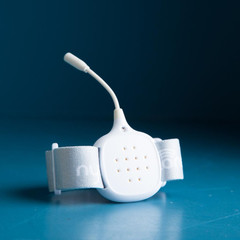Some children really struggle with potty training and continue to mess their pants or nappies. At about the age of 3-4 children are generally mastering potty training and getting themselves (with the help of mom and dad) out of their nappies. Some however struggle with this. They continue to soil themselves. This is can be very embarrassing, especially for older children.

Some Cognitive Behaviour Therapy tips to help:
Toilet socialization –
Helping your child to become more acquainted with using a toilet cannot be underestimated. It is recommended that you help your child to first become comfortable with the idea of defecating in a potty if they are not using a toilet at all. Once they get used to the idea of using or sitting on the potty they can progress to the toilet. It can be useful to have your child sit on the potty or toilet, even if they do not necessarily need to use the
Making the Toilet fun, exciting, positive and approachable –
Make the toilet a fun place to be. Some parents decorate the toilet with their child/children’s favourite cartoon characters or interests. Glow in the dark stars or mobiles from a hanging light switch are all possible ways of making the toilet an interesting and potentially fun place to be.
Modeling –
Modeling is demonstrating through your own behaviour that the toilet is a great place to be. This can be done by praising toilet use, by trying to provide positive and encouraging statements when anyone uses the toilet. Trying not to make using the toilet an embarrassing or negative body based activity, but rather one where ‘making a poo’ is great to have.
Gradual exposure –
If your child finds it particularly hard to use the toilet and feels anxious about sitting down on the toilet. Help her/him to gradually become accustomed to using it. It can be helpful to start by just sitting on the toilet even if there is no need to use it and to start by making that experience a positive one. Sometimes it may even be spending a bit of time in the toilet or bathroom without even sitting down on the toilet itself. Just spending some time talking about being there and then being there talking about other things can help a child to become more accustomed to the space. Familiarity does help reduce any anxieties and apprehension. Gradually exposing your child to the toilet and encouraging the use of a toilet with patience will improve your child’s confidence and mastery of the whole process.
Do not scold, criticize or shout –
Never shout, scold or criticize your child about her or his toilet use or any ‘mistakes they may have made’. Although sometimes we feel that punishment can help, this can in fact actually make matters worse. Children who get punished or feel guilty for making mistakes often learn to associate these feelings with the whole process and don’t learn very well how to master the toilet themselves. This also does not help their confidence and may sustain the problem.
Never coerce and be patient –
Don’t coerce your child into using the toilet by pleading or suggesting that they only get a prize if they manage to use it properly. If your child is not happy to use the toilet, they won’t go. Children need time, patience and positive encouragement. If she or he goes on their own or chooses to do so without much external pressure, this will be a lasting and positively emotional building experience.
Reward toilet use –
However rewarding toilet use can be good. Creating a sticker or star chart and rewarding every time there is an attempt (even if not succesful) will build encouragement and help to provide incentive for using the toilet. A larger gift can be negotiated once a certain number of stars/stickers have been reached, for example: an outing, favourite food as a treat or small toy.
Encopresis is really embarrassing and children often hate to speak about it. If your child is having difficulties with this it is often best to see a specialist to get help.
Information on treatment can be found at www.childrenstherapy.co.za or
www.rosensteintherapy.com



